A Slavic Holiday.. Day 4 – Prague
3 days down, two to go and in these three days, it seemed we had seen the world, also at the same time realizing that there was so much to see and do, would we cover it all? The day started off with a visit to the Prague Castle, also known as the Hradcany Castle (based on the borough or district in which it is located), which is stated to be the biggest Castle in the world, dating back to the 9th Century. Seat of power of the Kings of yore, Roman emperors, presidents of Czechoslovakia, it currently acts as the official residence of President of the Czech Republic.
- The Metro near the Hotel
- The Castle on Glass
- Heading to the Castle
The Castle as one goes through seems monstrous and never ending. As with most Castles, the viewing areas were limited to certain sections, however one can gauge the size as one passes through the Royal Gardens, the Basilica of St. George and the St. Vitus Cathedral, all going back centuries. The Cathedral as most Cathedral or Churches are in Europe is yet another reminder of the artistry and vision that builders and engineers of yore had when building these monuments. They are by no means small, with the domes up a good 100 – 150 feet, and with mural glass all around, the light coming in shades and highlighting the details of the glass paintings, which have survived time. Surely, if one would look at doing this today, most would be machined and in mass, but looking at these, simply makes one wonder, what greatness existed in the past.
- Castle View
- Modernization. Starbucks !
Passing by through the Castle, we headed through the Valdislav Hall, a room which was used for banquets, receptions, dating back to the Middle Ages. What was indeed astonishing was the fact that the room was long and wide enough to host tournaments between Knights! Impressive was the only word that came to mind. At the end of the Hallway was a small room, which apparently was akin to a small Parliament, where the King heard his ministers with the room built in a small theatre style. Currently this housed the Crown Jewels, and was interesting to hear from the guide that the main Jewel was from India! Surprising? Guess not.
- The Castle Guards
- And another Fountain
- King for a Day…
- The 1st President
Heading off from the Castle we passed by through the small lanes which were undoubtedly restored, however reminiscent of the past as to the traders who operated within the Castle grounds or nearby. It did appear that those who had shops there were the privileged ones but what was common was the manner that one would see all the historical old towns as, irrespective of the country that one would be in. Small alleys leading from the Castle through the shops, possibly also acting as a getaway in case of need, the roads entwining across the city, some heading into the expanse below, some leading back to where one started off. Confused and lost, could be one way of putting it.
- Getting Ready
- The Cathedral
- The Castle Lanes
- The Naked Boy Statue
As we headed onto lunch post the Castle visit, one could not but obviously note that the country had a balanced blend of both the historical and the modern. Key to any country’s survival, at least on the tourist front is no doubt their historical legacies, how these are managed, how visitors are treated, how much of heckling and nagging is faced by the local touts, but also how well the country blends modernization into the past. Retaining both has never been an easy job, and with most of Europe having the richness of the vast empires of the past and the great civilizations that seemingly possessed magical powers, when one looks at the creations, it was impressive as to how these were handled.
- Statuettes at the entrance
- In the Cathedral
- One of the many Murals
- The Castle Alleys
Lunch was another interesting affair. Another Indian restaurant, of course, and a birthday in tow (this tour seemed to be one of Birthdays) and with a one more Happy Birthday song, we proceeded on our walking tour around the city.
- Another Birthday Cake
Next stop was a walk around the Old Town Square, located between the Wienceslas Square and the Charles bridge and featuring the world famous Astronomical Clock going back to the medieval ages and built in the early 15th Century. It was quite a feat to learn that that was amongst the oldest Astronomical clocks, the only one still working. The clock mechanism features three main components with the dial representing the position of the Sun and the Moon, with various details. This then added with the 12 Apostles, featuring “The Walk” when the Clock strikes and a calendar dial with medallions representing the months of the year. The clock was without a question the novelty at the Old Town Square with the Apostles doing the walk every hour.
- @ the Cathedral
- Aren’t these everywhere
- Hey..MJ…
- A Cigar is a Cigar !!
- The Astronomical Clock
Impressive no doubt, but for the time that one had to wait to see the result, was a tad bit disappointing. However, the beauty of the Clock, or the accuracy of the details and the finesse of the dials, cannot be undermined. No doubt an absolute piece of art, yet another remnant of the mastery of the art of the past and the minds that existed. One could not but wonder, would they have been able to do this in the modern times? We are yet to see such visions created in the 20th and the 21st centuries what with all the resources available on hand. And this clock was 600 + years old.
Contd….


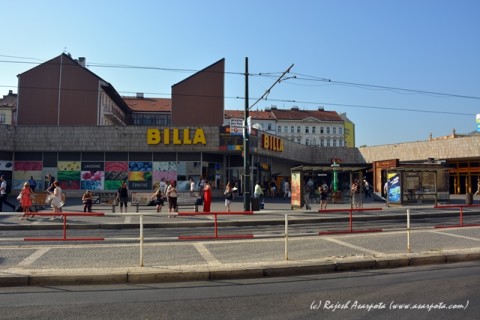

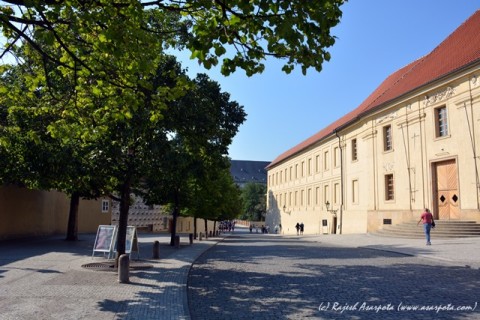

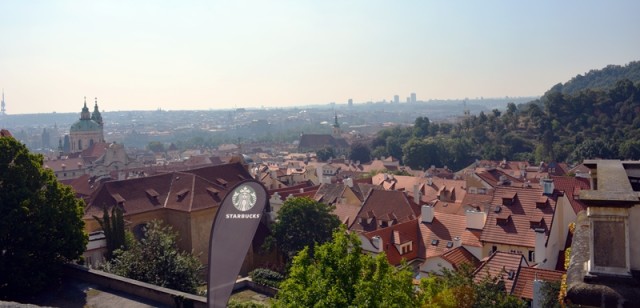

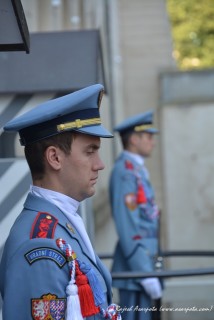
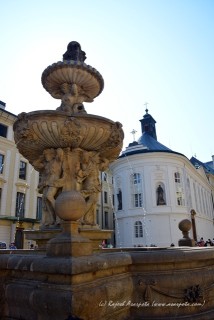

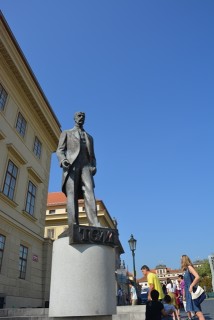

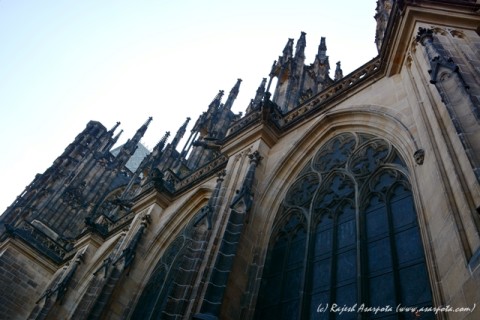
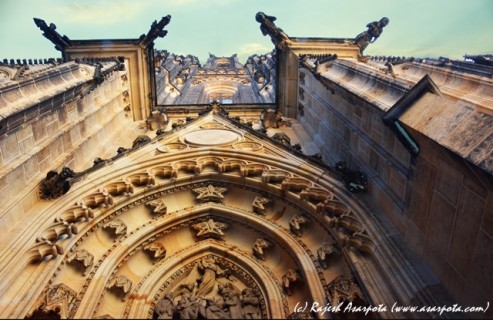

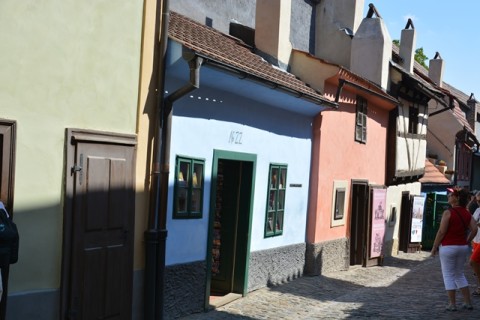


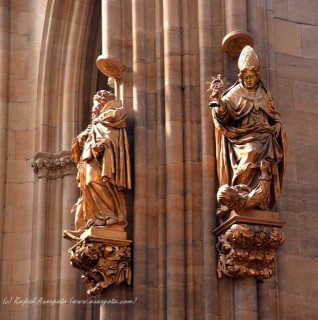
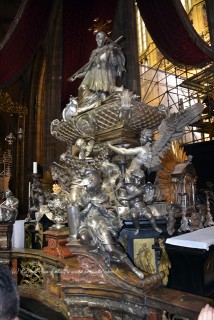
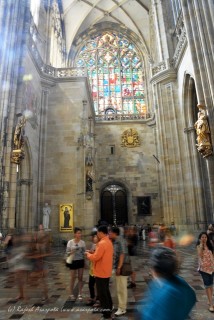
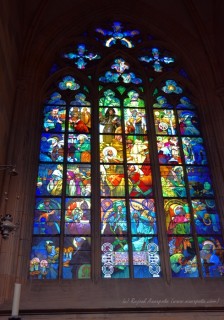
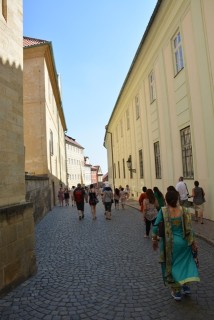
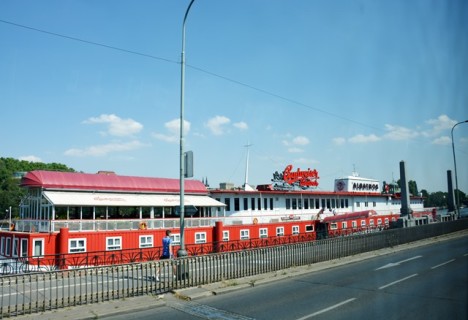
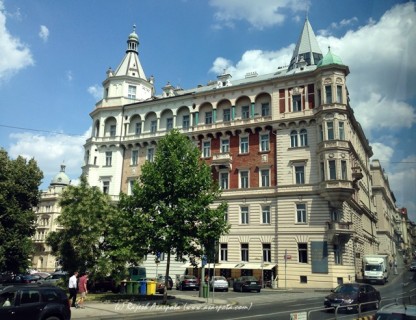
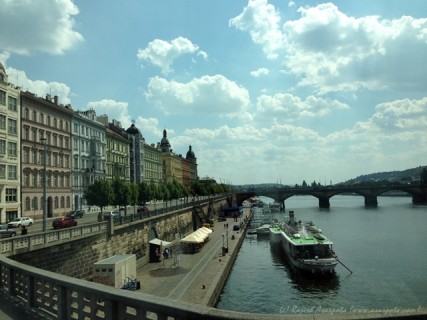
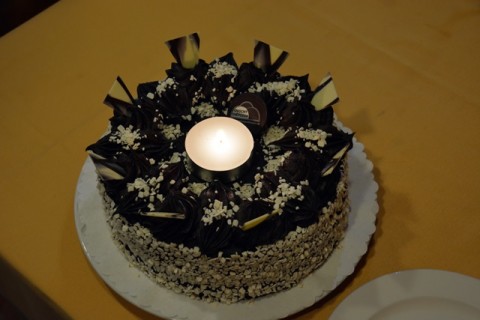


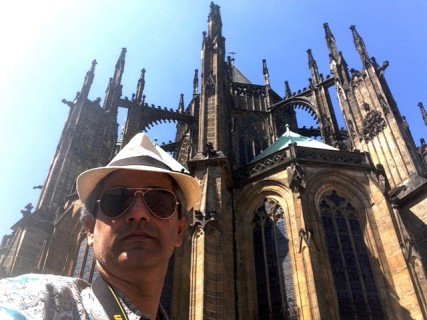
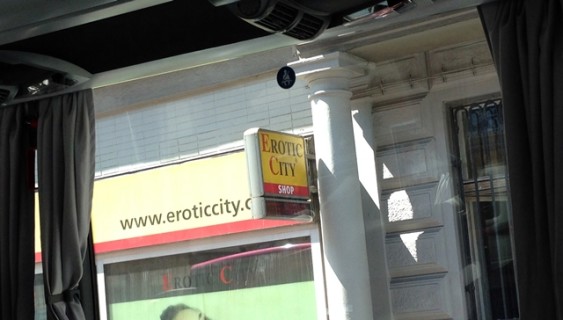
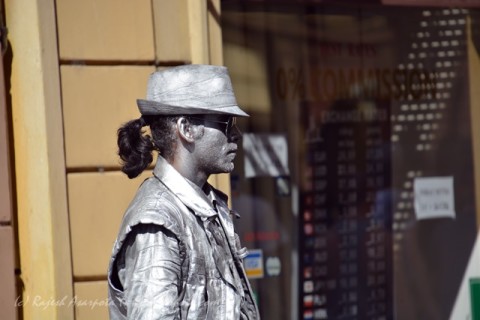
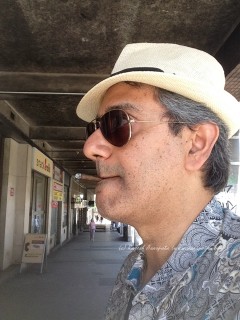
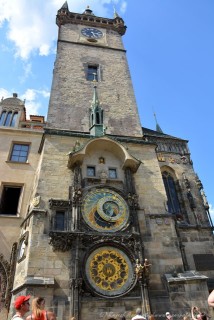


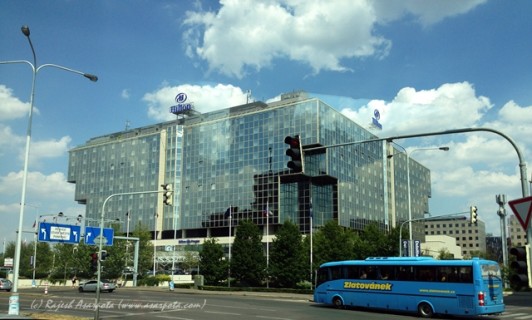
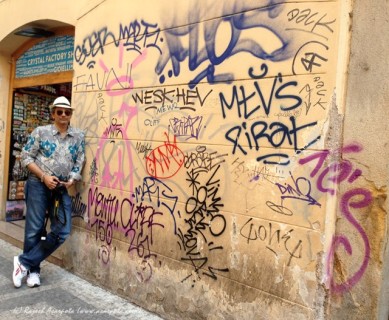



Ich stehe total auf manner die wissen was sie wollen and free online live webcams auf geile gesprache! Wenn du auf junge curvy blondienen mit gro?en Brusten stehst bist du bei mir genau richtig.
Milf with a need for fresh ! come in and enjoy!
I reckon something truly special in this website.
My website: порно мамашки
Wohh precisely what I was searching for, regards for putting up.
My website: сестренку в попку
I got what you intend,bookmarked, very decent website.
My website: порно зрелые фетиш
Thanks for the complete information. You helped me.
Major thanks for the article post. Much thanks again.
My website: трансики дрочат
Сайт https://fotonons.ru/ показывает обширный спектр идей в стилизации и декорировании интерьеров через фотографии. Вот некоторые ключевые моменты:
Вдохновение для Интерьера:
Показ практических рекомендаций для преобразования жилых пространств.
Акцент на разнообразные стили, включая скандинавский.
Разнообразие Контента:
Украшение балконов, гостинных, спален и других пространств.
Обеспечение богатого резервуара идей для улучшения дома или рабочего пространства.
Практическое Применение:
Советы по использованию этих стилей в реальных условиях.
Побуждающие примеры, показывающие возможности преображения пространства.
Этот текст увеличивает детализацию описания сайта, добавляет структуру в виде списков и перечислений, и размножен с использованием синонимов для увеличения вариативности.
___________________________________________________
Не забудьте добавить наш сайт в закладки: https://fotonons.ru/
Wohh precisely what I was searching for, regards for putting up.
My website: порно жесткое изнасилование
My website: порно массажист
Thanks for sharing, this is a fantastic blog post.Really thank you! Much obliged.
My website: жестокое изнасилование
I’m extremely pleased to discover this website. I wanted to thank you for ones time just for this fantastic read!
My website: категории русского порно
My website: русское порно категории
Thanks for sharing, this is a fantastic blog post.Really thank you! Much obliged.
My website: русское порно бесплатно новое
I gotta favorite this site it seems very beneficial handy
My website: порно русских студентов
As a Newbie, I am always searching online for articles that can help me. Thank you
My website: секс с русским учителем
As a Newbie, I am always searching online for articles that can help me. Thank you
My website: русское порно преподаватель и студентки
I¦ve learn some just right stuff here. Certainly price bookmarking for revisiting. I wonder how so much effort you set to make such a great informative website.
Would you be curious about exchanging links?
Throughout the awesome scheme of things you get a B+ with regard to effort. Where exactly you confused me was in your specifics. You know, they say, details make or break the argument.. And that couldn’t be much more accurate in this article. Having said that, let me inform you just what exactly did do the job. The article (parts of it) is pretty persuasive which is possibly the reason why I am taking an effort to opine. I do not really make it a regular habit of doing that. 2nd, despite the fact that I can easily notice the jumps in logic you come up with, I am not necessarily confident of exactly how you seem to unite the details which help to make the actual conclusion. For now I will, no doubt yield to your position but hope in the foreseeable future you actually connect the dots better.
Magnificent web site. Lots of useful info here. I am sending it to a few friends ans also sharing in delicious. And certainly, thanks for your sweat!
The solution to your cat’s problem will depend on the underlying causes of their behavior.
Fantastic website. A lot of helpful information here. I am sending it to a few pals ans additionally sharing in delicious. And of course, thank you in your effort!
Appreciate you sharing, great post.Really looking forward to read more. Great.
Im grateful for the article post.Much thanks again. Fantastic.
Enjoyed every bit of your blog.Thanks Again. Great.
These offer a selection of sizes to decide on from. There is a Small Double, Large and Extra-Large wallet, though each you’ve got limited capacity.
I blog often and I seriously thank you for your information. This great article has really peaked my interest. I will take a note of your blog and keep checking for new information about once a week. I opted in for your Feed too.
Looking forward to reading more. Great blog.Really thank you! Fantastic.
I wish to express my appreciation to this writer just for bailing me out of such a issue. Right after exploring throughout the the net and obtaining notions which were not helpful, I believed my entire life was well over. Being alive devoid of the solutions to the problems you have sorted out by means of the review is a crucial case, and the ones that would have in a wrong way affected my entire career if I had not encountered the blog. Your own competence and kindness in dealing with the whole lot was vital. I don’t know what I would’ve done if I hadn’t encountered such a solution like this. I’m able to at this time look forward to my future. Thanks a lot so much for your impressive and effective help. I won’t be reluctant to suggest your web sites to anybody who wants and needs support about this issue.
Hello friends, fastidious piece of writing and pleasant urging commented at this place, I am genuinely enjoying by these.
Thanks for the article post.Really thank you! Cool.
An intriguing discussion is worth comment. There’s no doubt that that you need to write more on this subject matter, it may not be a taboo subject but typically folks don’t talk about these subjects. To the next! Cheers!!
I really like and appreciate your article. Really Great.
Hi, I wish for to subscribe for this blog to obtain most up-to-date updates,therefore where can i do it please help.
Thanks-a-mundo for the blog article.Thanks Again. Will read on…
Hi just wanted to give you a brief heads up and let youknow a few of the pictures aren’t loading properly. I’m not surewhy but I think its a linking issue. I’ve tried itin two different internet browsers and both show the same results.
This piece of writing is genuinely a pleasant one it helps new net people, who are wishing in favor of blogging.
I’m not sure why but this blog is loading extremely slow for me. Is anyone else having this problem or is it a issue on my end? I’ll check back later and see if the problem still exists.
Thanks for sharing, this is a fantastic blog post.Thanks Again. Want more.
That is a very good tip especially to those new to the blogosphere. Brief but very accurate informationÖ Thanks for sharing this one. A must read post!
Looking forward to reading more. Great article post.Really thank you! Really Cool.
Remarkable! Its really awesome piece of writing, I have got much clear idea regarding fromthis paragraph.
Major thankies for the blog post.Really thank you! Want more.
«??????? ????? ?? ?????, ???? ????? – ?? ?? ?????,???? ????? – ?? ?? ?????, ???? ????? – ?? ?? ???».?????? ??????????Loading…
Enjoyed every bit of your article.Really looking forward to read more. Great.
Very nice design and excellent content material,nothing at all else we want :D.Feel free to visit my blog; diet solution program
This simply may be the life-altering product you’ve been waiting on.
Thanks again for the article post.Thanks Again. Really Cool.
Good article. I will be dealing with a few of these issues as well..
Acidez de estómago: marca, enfermedad y cuidado
Im grateful for the article. Much obliged.
canadian pharmacy complaints cvs pharmacy 24 hour store
Relevant: Have Movie Kill Written text Subject material Advertising?
wow, awesome blog post.Much thanks again. Really Cool.
Heya i am for the first time here. I found this board and I findIt really useful & it helped me out a lot.I hope to give something back and help others like you helped me.
Looking forward to reading more. Great blog article.Much thanks again. Want more.
Paragraph writing is also a fun, if you be acquainted with then you can write otherwise it is complicated to write.
I loved your blog post.Much thanks again. Really Cool.
ivermectin paste for ear mites in horses ivermectin for kids
Your method of describing everything in this piece of writing is in fact nice, every one can effortlessly understand it, Thanks a lot.
There is evidently a bunch to know about this. I feel you made some good points in features also.
You’re hence amazing. Oh my Lord. God bless you.
engineering college essay essay writing tests writing a essay outline
It’s hard to find experienced people on this topic, however, you seem like you know what you’re talking about! Thanks
Our fantastic helps you take initiative with any person or job.
Enjoyed every bit of your blog post.Thanks Again. Really Cool.
Muchos Gracias for your article post.Really thank you! Awesome.
Discover the most effective routines of successful people.
Hi there, just wanted to tell you, I liked this blog post.It was funny. Keep on posting!
Greetings! Very useful advice within this post! It is the littlechanges that produce the most significant changes.Thanks for sharing!
I really enjoy the blog article.Thanks Again. Cool.
Great, thanks for sharing this article.Thanks Again. Much obliged.
I really like and appreciate your blog post.Thanks Again. Fantastic.
Enjoy as well as get things done with the most amazing device!
Nice post. I used to be checking constantly this blog and I’m impressed! Extremely useful info particularly the final phase 🙂 I care for such information much. I was looking for this certain info for a long time. Thank you and best of luck.
I think this is a real great article.Really looking forward to read more. Really Cool.
This is the option you have actually been waiting on!
wow, awesome blog.Thanks Again. Will read on…
Hi there! This post couldn’t be written anybetter! Reading through this post reminds me of my old room mate!He always kept talking about this. I will forward this article tohim. Pretty sure he will have a good read. Thanks for sharing!
I really liked your blog.Really looking forward to read more. Really Great.
van buren apartments annapolis apartments westwood apartments for rent
Great, thanks for sharing this post.Much thanks again. Really Cool.
Thanks a lot for the article.Much thanks again. Fantastic.
Your style is very unique compared to other people I have read stuff from. I appreciate you for posting when you’ve got the opportunity, Guess I’ll just bookmark this blog.
Really enjoyed this article post.Really looking forward to read more. Want more.
Guangzhou Liqi Textile Technology Co., Ltd.コピーブランド福岡
I loved your article post.Really thank you! Really Cool.
Perfectly written articles , appreciate it for entropy.
This is one awesome article.Much thanks again.
Thanks for the blog.Really thank you! Will read on…
Hey, thanks for the article post.Really thank you! Awesome.
Thank you for your article post.Thanks Again. Much obliged.
Thanks again for the article post.
Trusting to make the right decisions can be tough. It takes years to build confidence. Its not the sort of thing that simply just happens.
I really enjoy the article post.Much thanks again. Keep writing.
Awesome post.Really thank you! Awesome.
Hey, thanks for the blog.Really thank you! Much obliged.
Hello There. I found your blog using msn. This is a really well written article. I will make sure to bookmark it and come back to read more of your useful info. Thanks for the post. I’ll certainly return.
Heya i am for the first time here. I came across this board and I find It really useful & it helped me out a lot. I’m hoping to present one thing again and aid others such as you helped me.
Reach your objectives, obtain even more done and also enhance your life!
Very neat blog article. Keep writing.
Im grateful for the blog.Thanks Again. Much obliged.
Awesome blog post.Really looking forward to read more.
Article writing is also a excitement, if you knowafter that you can write otherwise it is complex to write.
Appreciate you sharing, great article post.Really looking forward to read more. Will read on…
I appreciate you sharing this blog post.Really looking forward to read more. Keep writing.
lake oswego apartments rentberry scam ico 30m$ raised bullhead city apartments
When it comes to added benefits, tik tok followers no verification
canadian pharmacy victoza legitimate online pharmacy usa – pharmaceuticals online australia
Really appreciate you sharing this article.Really looking forward to read more. Fantastic.
Looking forward to reading more. Great article.Much thanks again. Much obliged.
I think this is a real great article post. Keep writing.
“Greetings! Very handy assistance in this article! It’s the tiny alterations that make the largest modifications. A lot of many thanks for sharing!”
Appreciate you sharing, great blog article.Thanks Again. Really Cool.
edgewater village apartments doral view apartments
Looking forward to reading more. Great blog.Really thank you! Awesome.
I am sure this paragraph has touched all the internet visitors, its really really good post on building up new blog.
i really liked this blog post. Thanks a lot for sharing it. Really cool stuff and you have a new supporter.
ivermectin 1.87 dosage for cats ivermectin liquid for dogs
Thanks again for the article post.Really looking forward to read more. Keep writing.
Superb post.Never knew this, appreciate it for letting me know.
Major thanks for the blog post.Really looking forward to read more.
Thanks for the blog article. Much obliged.
mexican pharmacy online pharmacy online uae – canadian pharmacy world
Very good blog article.Thanks Again.
Really appreciate you sharing this article.Much thanks again. Cool.
Currently it sounds like WordPress is the top blogging platform available right now. (from what I’ve read) Is that what you’re using on your blog?
Great, thanks for sharing this blog post. Great.
Really appreciate you sharing this article. Really Great.
Appreciate you sharing, great post.Much thanks again. Really Great.
Aw, this was an extremely good post. Taking the time and actual effort to createa very good article? but what can I say? I procrastinate a whole lot and don’t manage to get nearly anything done.Look into my blog post … heavy metal music
The most impressive item ever created!
is hydroxychloroquine hydroxychloride medicine hydroxochlorquine
The Globe’s Many Advanced Performance!
I cannot thank you enough for the blog post.Thanks Again. Will read on…
Greetings! Very helpful advice within this post! It’s the little changes which will make the most significant changes. Thanks a lot for sharing!
A round of applause for your blog.Really looking forward to read more. Great.
Thanks so much for the article.Much thanks again. Cool.
He was at pains to say support for Afghanistan wouldn’t stop, but even more adamant that both Afghan politicians and security forces had the capacity to prevent a Taliban takeover. “Will they do it?” he asked.
Hey! Do you know if they make any plugins to safeguard against hackers? I’m kinda paranoid about losing everything I’ve worked hard on. Any tips?
I think this is a real great blog post.Much thanks again. Great.
Introducing Amazingness, the productivity device that will certainly alter your life!
I am so grateful for your post.Really looking forward to read more. Fantastic.
I don’t even know how I ended up here, but I thought this post was great.I don’t know who you are but definitely you are going to afamous blogger if you are not already Cheers!
You deserve this!
Absolutely nothing can be just as good as this!
Muchos Gracias for your article.Really thank you! Will read on…
stromectol online pharmacy ivermectin for sale humans – stromectol coronavirus
Im obliged for the post. Fantastic.
Thanks for the article post.Really thank you! Really Cool.
I truly appreciate this post.Really looking forward to read more. Fantastic.
Very informative blog article.Thanks Again. Much obliged.
What a data of un-ambiguity and preserveness of preciousfamiliarity regarding unexpected emotions.
marc jacobs bags outlet ??????30????????????????5??????????????? ????????
Great article post. Really Great.
Hi friends, good article and fastidious arguments commentedhere, I am truly enjoying by these.
Wow, great post. Keep writing.
Very informative blog. Will read on…
Very neat post. Want more.
Thanks a lot for the article.Much thanks again. Great.
Hi asarpota.com admin, Your posts are always well received by the community.
Get one of the most out of your day with this incredible item!
Sensational is an all-in-one life management system that assists you obtain even more performed in less time.
It resembles having a personal assistant to assist you get even more done in less time.
I really like and appreciate your post.Really looking forward to read more. Fantastic.
Thanks again for the blog.Thanks Again. Want more.
Appreciate you sharing, great blog post.Much thanks again. Really Cool.
I cannot thank you enough for the article.Much thanks again. Want more.
Thanks for the blog article.Thanks Again. Really Cool.
F*ckin? awesome things here. I?m very satisfied to look your article. Thank you a lot and i’m looking forward to touch you. Will you please drop me a mail?
scoliosisIt’s actually a great and useful piece of information. I am happy that youshared this useful info with us. Please stay us up to datelike this. Thanks for sharing. scoliosis
I value the post. Keep writing.
Thank you for some other informative blog. Where else may just I am getting that kindof info written in such an ideal approach? Ihave a undertaking that I’m just now running on, and I havebeen on the glance out for such info.
A round of applause for your blog. Really Great.
Thank you for your post. Awesome.
I live here increased finasteride dosage Sadly, you are no longer allowed to enter any of the ruins, so bring binoculars if you want to see the details.
I really like and appreciate your blog post.Really looking forward to read more. Great.
Say goodbye to stressful days and nights when you can’t discover a cure to your clinical illness.
Really appreciate you sharing this blog.Much thanks again. Fantastic.
You deserve this!
Pretty! This was an extremely wonderful post. Thanksfor providing these details.Here is my blog post – Proteïne poeder
Hi asarpota.com administrator, Your posts are always well-written and engaging.
You made various nice points there. I did a search on the subject matter and found most persons will agree with your blog.
Im thankful for the blog article.Thanks Again. Really Great.
Excellent items from you, man. I have take note your stuff prior to and you’re just extremely fantastic. I actually like what you’ve bought here, certainly like what you’re saying and the way in which by which you say it. You’re making it enjoyable and you continue to care for to stay it wise. I cant wait to learn much more from you. That is really a wonderful website.
Hello! This post couldn’t be written any better! Reading through this post reminds me of my previous room mate! He always kept talking about this. I will forward this write-up to him. Pretty sure he will have a good read. Thanks for sharing!
Currently, picture how much extra terrific life could be with this outstanding product that helps make it all happen!
To the asarpota.com administrator, You always provide great information and insights.
Thanks for the article.Thanks Again. Great.
I am genuinely glad to glance at this blog posts which carries tons of valuable facts, thanks for providingsuch data.
Great article post.Much thanks again. Want more.
I wanted to thank you for this very good read!! I certainly enjoyed every little bit of it. I have got you bookmarked to look at new things you post…
over the counter erectile dysfunction pills canadian medications – natural ed remedies
Thanks again for the post. Keep writing.
Major thanks for the blog post.Really thank you! Want more.
ivermectin 4000 mcg ivermectin pills canada – stromectol in canada
Thanks for the post.Much thanks again. Keep writing.
The Amazingness life-changing guide can assist you be a lot more productive, remain healthier, and appreciate life more!
I really liked your article.Thanks Again. Really Cool.
Aw, this was a very nice post. Finding the time and actual effort to create a very good articleÖ but what can I sayÖ I procrastinate a lot and don’t manage to get nearly anything done.
Fantastic blog article. Great.
cetirizine brand what is nurtec warnings for cetirizine
is cymbalta an maoi can cymbalta get you high
Enjoyed every bit of your blog.Thanks Again. Want more.
Greetings! Very useful advice within this article! It’s the little changes which will make the most important changes. Thanks for sharing!
Amazingness is an all-in-one performance tool that will let you do much more in much less time.
Really appreciate you sharing this article.Really thank you! Keep writing.
Awesome blog.Thanks Again. Much obliged.
I am so grateful for your article.Thanks Again. Keep writing.
Im thankful for the article post. Cool.
Thank you ever so for you article post.Really looking forward to read more. Want more.
My website: порно узбек
Im grateful for the post.Really looking forward to read more. Fantastic.
Really appreciate you sharing this post.Really thank you! Cool.
Hello asarpota.com owner, Your posts are always well received by the community.
This paragraph offers clear idea in supportof the new people of blogging, that in fact how to do blogging.
I have seen that currently, more and more people are being attracted to camcorders and the area of digital photography. However, being photographer, you will need to first shell out so much time frame deciding the exact model of camera to buy as well as moving via store to store just so you might buy the least expensive camera of the brand you have decided to pick. But it does not end right now there. You also have to take into consideration whether you should purchase a digital dslr camera extended warranty. Thx for the good ideas I acquired from your web site.
Oh my goodness! Awesome article dude! Many thanks, However I am going through problems with your RSS. I don’t know why I cannot join it. Is there anybody else getting identical RSS issues? Anyone that knows the answer can you kindly respond? Thanx!!
This unique blog is definitely cool and besides diverting. I have found many helpful advices out of this source. I’d love to come back every once in a while. Thanks a lot!
Normally I do not read article on blogs, but I wish to say that thiswrite-up very forced me to check out and do it! Your writing taste hasbeen amazed me. Thanks, quite nice article.
Say, you got a nice post. Really Cool.
Thanks for the good writeup. It actually was once a leisure account it. Look advanced to far added agreeable from you! However, how could we keep in touch?
I am sure this paragraph has touched all the internet viewers, its really really nice piece of writing on building up new blog.
Breathing in and out several times a day improves your life profoundly.
I reckon something truly special in this website.
My website: порно азиаток
Muchos Gracias for your blog post.Really looking forward to read more. Awesome.
The one you ought to have yet didn’t know about!
Great article.Much thanks again. Great.
It’s crucial that you take a look at all the options available when you want to be successful in something.
Major thanks for the blog post.Much thanks again. Great.
When you have Amazingness in your life, it’s simple.
Wow, great blog.Much thanks again. Great.
Aw, this was an exceptionally nice post. Spending some time and actual effort to produce a superb articleÖ but what can I sayÖ I hesitate a whole lot and never seem to get anything done.
To the asarpota.com administrator, Thanks for the well-presented post!
This guide will aid you to take your service and also individual skills to the next degree!
Its the brand-new innovation that will certainly alter your life.
pay someone to write my paper pay people to write papers
Howdy! Do you know if they make any plugins toassist with SEO? I’m trying to get my blog to rank for sometargeted keywords but I’m not seeing very good results.If you know of any please share. Appreciate it!
Phenomenal is a distinct efficiency device that will certainly aid you get more carried out in much less time.
Phenomenal is the perfect efficiency tool that can aid you handle your time much better and also get more done in much less time!
I like the valuable info you provide in your articles. I’ll bookmark your blog and check again here regularly. I’m quite certain I’ll learn many new stuff right here! Good luck for the next!
To the asarpota.com admin, Your posts are always well-supported by facts and figures.
Incredible is the ideal performance tool to help you get even more done in less time!
Sensational is the excellent remedy for anybody wanting to obtain more carried out in less time!
I need to to thank you for this great read!! I definitely loved every little bit of it. I have you bookmarked to look at new things you postÖ
I cannot thank you enough for the blog post.Really thank you! Awesome.
plaquenil online alternatives to plaquenil for rheumatoid arthritis what are side effects of plaquenil
The very best point that you can use to stay in advance in life.
You’ll have the ability to do even more, have extra fun, and also feel remarkable!
From more energy to far better sleep, Amazingness can do everything for you!
Great, thanks for sharing this blog article.Much thanks again. Will read on…
I value the blog article.Really looking forward to read more. Really Great.
slots for real money free online slots slots for real money
Thank you ever so for you blog.Really looking forward to read more. Will read on…
I was just seeking this info for some time. After 6 hours of continuous Googleing, at last I got it in your website. I wonder what is the lack of Google strategy that do not rank this kind of informative web sites in top of the list. Generally the top web sites are full of garbage.
Greetings! Very helpful advice within this post! It’s the little changes which will make the biggest changes. Many thanks for sharing!
I think this is a real great blog article.Really thank you! Want more.
Thanks again for the blog post. Want more.
wp templates free Continue free wordpess themes with two sidebars
Major thankies for the blog.Thanks Again. Will read on…
Piece of writing writing is also a excitement, if yoube acquainted with afterward you can write otherwise it is difficult to write.
You really make it seem so easy with your presentation but I find this topic to be really something that I think I would never understand. It seems too complicated and extremely broad for me. I’m looking forward for your next post, I?ll try to get the hang of it!
Very good post.Thanks Again. Fantastic.
Hello mates, pleasant piece of writing and nice arguments commented here, I am truly enjoying by these.
“There’s a feeling that finally we can breathe; we can start trying to get back what we’ve lost,” Devi Sridhar, the head of the global public health program at the University of Edinburgh, told The Times.카지노사이트
That’s right, it’s a software application that permits you to be extra productive.
Some think that legalized sports wagering could detract from it, which has to some degree served a replacement for legal sports betting.
To the asarpota.com admin, Thanks for the well-researched and well-written post!
This piece of writing offers clear idea designed for the new viewers of blogging, that actually how to do running a blog.
The Amazingness is the ideal method to get more out of your life.
best male ed pills herbal ed treatmentbest ed treatment pills
Fantastic article post. Much obliged.
I have realized that over the course of constructing a relationship with real estate proprietors, you’ll be able to come to understand that, in every single real estate financial transaction, a percentage is paid. Finally, FSBO sellers never “save” the payment. Rather, they struggle to win the commission by means of doing an agent’s work. In completing this task, they devote their money and also time to conduct, as best they will, the obligations of an realtor. Those assignments include getting known the home by way of marketing, introducing the home to willing buyers, building a sense of buyer emergency in order to make prompt an offer, preparing home inspections, controlling qualification checks with the financial institution, supervising maintenance tasks, and aiding the closing of the deal.
Hi there! I simply want to give you a huge thumbs up for the great information you’ve got right here on this post. I am coming back to your blog for more soon.
The very best thing that you can utilize to stay in advance in life.
To the asarpota.com admin, You always provide great examples and real-world applications, thank you for your valuable contributions.
The Amazingness will transform your life for the better!
You don’t have to be superhuman to be outstanding. Let Amazingness help you do much more, really feel better, and also get ahead.
great points altogether, you just won a brand new reader. What could you recommend about your post that you just made some days ago? Any positive?
Hi there colleagues, its fantastic article about teachingand completely explained,keep it up all the time.Here is my blog post; busty 레즈비언 수녀 gets seduced and rimmed by dyke
I really like it when peoplke get together and share thoughts.Great blog, continue the good work!
This is my first time pay a quick visit at here and i am in fact happy to read everthing at alone place.
lisinopril angioedema african american generic for lisinopril
I truly appreciate this blog article. Awesome.
Incredible advantages for you, family and friends that continue providing.
I have learned result-oriented things from a blog post. Yet another thing to I have observed is that normally, FSBO sellers may reject you actually. Remember, they can prefer not to ever use your products and services. But if a person maintain a gentle, professional romance, offering aid and remaining in contact for around four to five weeks, you will usually have the ability to win a business interview. From there, a house listing follows. Thanks
Thanks for helping out, superb information. Our individual lives cannot, generally, be works of art unless the social order is also. by Charles Horton Cooley.
You made some first rate factors there. I regarded on the internet for the difficulty and located most people will go together with with your website.
An intriguing discussion is worth comment. I think that you ought to write more about this subject, it may not be a taboo matter but generally folks don’t speak about these issues. To the next! All the best!!
Awesome article post.Much thanks again. Awesome.
บาคาร่าออนไลน์ ที่ เว็บพนัน เว็บนี้เด็ดจ่ายจริงๆ ท่านกล้ามาเล่นกับเรา ได้เงินเราก็กล้าจ่ายให้เต็มๆ ไม่อิดออด ไม่งอแง เล่นบาคาร่ากับเราสัญญาณชัดเจน ภาพสวยงาม มีกลุ่มของเหล่าเซียนที่กล้านำเล่นแล้วได้เงินจริงๆไปใช้กันเลย
Thanks for sharing, this is a fantastic blog post.Really looking forward to read more. Cool.
Hi there! I could have sworn I’ve been to your blog before but after browsing through many of the articles I realized it’s new to me. Regardless, I’m definitely delighted I came across it and I’ll be book-marking it and checking back often.
Good day! Would you mind if I share your blog with my myspace group? There’s a lot of people that I think would really appreciate your content. Please let me know. Thank you
Fantastic blog.Much thanks again. Much obliged.
Hi! Do you know if they make any plugins to assist with Search Engine Optimization? I’m trying toget my blog to rank for some targeted keywords but I’m not seeing very good results.If you know of any please share. Cheers!
Nice post. I was checking constantly this blog and I am impressed! Extremely useful info particularly the last part 🙂 I care for such info much. I was seeking this certain information for a very long time. Thank you and good luck.
I cannot thank you enough for the blog post.Much thanks again. Much obliged.
Amazing is the perfect efficiency device that can assist you handle your time better and get even more carried out in less time!
ivermectin treatment for covid ivermectin for covid-19
Hi! I’m at work browsing your blog from my new apple iphone! Just wanted to say I love reading through your blog and look forward to all your posts! Keep up the outstanding work!
I dugg some of you post as I thought they were very helpful invaluable
ivermectin generic name ivermectin canada – ivermectin 2
Thanks for sharing your thoughts about when. Regards
Outstanding story over again. I am looking forward for your next post:) firmonet
Watch your dreams become a reality with amazingness! Reach experience absolutely impressive renovations.
It’s truly a nice and useful piece of info. I’m glad that yousimply shared this helpful info with us. Pleasekeep us up to date like this. Thanks for sharing.Feel free to surf to my blog: silk robe (seo-services-company79012.bcbloggers.com)
Excellent read, I just passed this onto a friend who was doing some research on that. And he actually bought me lunch since I found it for him smile Therefore let me rephrase that: Thank you for lunch!
Hello, yes this article is in fact fastidious and I have learned lot of things from itregarding blogging. thanks.
Thank you ever so for you blog article.Thanks Again. Cool.
To the asarpota.com administrator, You always provide great resources and references.
To the asarpota.com admin, You always provide helpful diagrams and illustrations.
Drink this, as well as the result will certainly amaze even on your own.
Thanks for the blog.Really looking forward to read more. Fantastic.
Simply wish to say your article is as astonishing. The clarity in your post is just excellent and i can assume you are an expert on this subject. Fine with your permission let me to grab your RSS feed to keep up to date with forthcoming post. Thanks a million and please carry on the rewarding work.
Im thankful for the article.Really looking forward to read more. Much obliged.
I have seen that clever real estate agents all around you are Marketing and advertising. They are recognizing that it’s more than just placing a sign in the front place. It’s really pertaining to building connections with these vendors who later will become buyers. So, once you give your time and energy to encouraging these vendors go it alone : the “Law of Reciprocity” kicks in. Good blog post.
Great article.Much thanks again. Really Cool.
These are actually fantastic ideas in concerning blogging. You have touched some nice points here. Any way keep up wrinting.
does hydrochlorothiazide cause hair loss lisinopril cough remedies
hi!,I love your writing very a lot! proportion we keep in touch more about your post on AOL? I require an expert on this area to resolve my problem. May be that is you! Having a look forward to peer you.
I enjoy looking through an article that will make people think. Also, thanks for permitting me to comment!
It’s going to be finish of mine day, however before end I am reading this wonderfulpiece of writing to increase my know-how.
Is anyone here in a position to recommend Kama Sutra? Thanks xx
Good post however I was wanting to know if you could write a litte more on this topic? I’d be very grateful if you could elaborate a little bit more. Cheers!
After I initially commented I clicked the -Notify me when new feedback are added- checkbox and now each time a comment is added I get 4 emails with the identical comment. Is there any approach you’ll be able to remove me from that service? Thanks!
This is something that every home and also organization requirements.
When I initially commented I clicked the -Notify me when new feedback are added- checkbox and now each time a remark is added I get 4 emails with the identical comment. Is there any approach you can remove me from that service? Thanks!
Aw, this was an incredibly good post. Taking a few minutes and actual effort to create a top notch articleÖ but what can I sayÖ I hesitate a lot and don’t manage to get nearly anything done.
I value the blog post.Really thank you! Awesome.
Nice blog here! Also your site loads up very fast! What host are you using? Can I get your affiliate link to your host? I wish my site loaded up as quickly as yours lol
it on his own PSN account. If you already know everything
Hey, thanks for the article post.Much thanks again. Keep writing.
hello!,I really like your writing very much! share we keep up a correspondence more about your post on AOL? I need an expert in this house to resolve my problem. May be that’s you! Taking a look ahead to peer you.
Just want to say your article is as surprising. The clearness in your post is simply great and i could assume you are an expert on this subject. Well with your permission let me to grab your feed to keep updated with forthcoming post. Thanks a million and please carry on the enjoyable work.
This is one awesome blog post.Really thank you! Fantastic.
Hello asarpota.com administrator, Thanks for the well-organized and comprehensive post!
I am so happy to read this. This is the type of manual that needs to be given and not the random misinformation that’s at the other blogs. Appreciate your sharing this best doc.
Hello asarpota.com administrator, Thanks for the educational content!
ivermectin cream 1 ivermectin 1 cream generic – ivermectin rx
I’m really enjoying the design and layout ofyour blog. It’s a very easy on the eyes which makes it much more enjoyable forme to come here and visit more often. Did you hire outa designer to create your theme? Outstanding work!
Awesome blog post.Thanks Again. Really Cool.
A motivating discussion is worth comment. I do believe that you need to publish more on this issue, it may not be a taboo subject but typically folks don’t discuss these issues. To the next! All the best!!
araç üstü çadır Jaxx Monaghan araba üstüne çadır Ziggy Ridley araba ünlem işareti Rosalie Davie araba üretimi Calvin Fox araba ürünleri Farhaan Charles araba hoparlör Katya Rodriguez araba hararet yaparsa Ephraim Roy araba hediyesi Fahmida Knights
Dear asarpota.com admin, Your posts are always well-referenced and credible.
Dear asarpota.com admin, Nice post!
Hmm is anyone else having problems with the pictures on this blog loading?I’m trying to figure out if its a problem on my end or if it’s the blog.Any responses would be greatly appreciated.Here is my blog :: fat loss diet
Find out how to feel impressive and also as if your life has a function. Reclaim control of your life with this!
Hey There. I found your blog using msn. This is a very well written article.I will make sure to bookmark it and come back to read more of youruseful information. Thanks for the post. I will definitely comeback.
I mastered more new things on this fat reduction issue. One issue is that good nutrition is vital while dieting. A big reduction in junk food, sugary foods, fried foods, sugary foods, red meat, and white flour products might be necessary. Having wastes organisms, and poisons may prevent desired goals for losing belly fat. While selected drugs briefly solve the situation, the nasty side effects are certainly not worth it, and in addition they never give more than a temporary solution. This is a known proven fact that 95 of celebrity diets fail. Thank you for sharing your ideas on this blog.
zoosk dating match dating hinge dating app
Nothing else item has whatever that this one does, as much as date!
Right now it appears like WordPress is the preferred blogging platform out there right now. (from what I’ve read) Is that what you are using on your blog?
Amazingness can aid you become much more effective and also get more out of life!
This is a time saving life changer!
Hey There. I found your blog using msn. This is a really well written article. I will make sure to bookmark it and return to read more of your useful info. Thanks for the post. I will certainly return.
Very neat article post. Fantastic.
Fantastic article post.Really looking forward to read more. Really Great.
Check out just how this device can alter your life for the better!
The only high-quality and also finish natural sleep aid that ensures a full, deep revitalizing night’s rest!
Amazingness is an complete life productivity collection that makes obtaining things done not just simpler, however much more impressive.
Another thing I’ve noticed is that often for many people, a bad credit score is the consequence of circumstances beyond their control. As an example they may be really saddled through an illness so they really have more bills for collections. It would be due to a employment loss or even the inability to work. Sometimes separation and divorce can really send the funds in an opposite direction. Many thanks sharing your notions on this weblog.
Very informative blog post. Great.
Hello there, just became alert to your blog through Google, and found that it’s truly informative.I am going to watch out for brussels. I will be grateful if you continue this in future.Numerous people will be benefited from your writing. Cheers!
Another thing I have noticed is the fact that for many people, below-average credit is the reaction of circumstances beyond their control. As an example they may are already saddled with illness and as a consequence they have substantial bills going to collections. It could be due to a job loss or perhaps the inability to go to work. Sometimes divorce process can send the financial circumstances in the undesired direction. Many thanks for sharing your notions on this weblog.
I love what you guys are usually up too. This kind of clever work and reporting! Keep up the fantastic works guys I’ve included you guys to my personal blogroll.
Hi asarpota.com owner, Your posts are always a great source of information.
The following time I learn a weblog, I hope that it doesnt disappoint me as a lot as this one. I imply, I do know it was my option to learn, however I actually thought youd have one thing interesting to say. All I hear is a bunch of whining about something that you can fix in the event you werent too busy on the lookout for attention.
Hello asarpota.com admin, Your posts are always well-received and appreciated.
Hi asarpota.com webmaster, Your posts are always well-referenced and credible.
There’s certainly a great deal to find out about this subject. I really like all of the points you’ve made.
tons of useful information, thanks for providing these information.
It’s difficult to find knowledgeable people for this topic, however, you seem like you know what you’re talking about!Thanks
From my observation, shopping for electronic products online can for sure be expensive, nevertheless there are some tips and tricks that you can use to obtain the best offers. There are continually ways to find discount bargains that could make one to possess the best electronic products products at the lowest prices. Great blog post.
Great, thanks for sharing this article. Fantastic.
You actually reported this adequately.how to write an admissions essay for college magic thesis statement academic ghostwriter
I must thank you for the efforts you have put in penning this blog. I am hoping to see the same high-grade content by you later on as well. In truth, your creative writing abilities has inspired me to get my very own blog now 😉
Hi there, I enjoy reading through your post. I like to write a little comment tosupport you.
It’s genuinely very difficult in this active life to listen news on Television, soI simply use internet for that reason, and get the most up-to-date news.
Dear asarpota.com webmaster, Thanks for the well-researched and well-written post!
Dear asarpota.com owner, Thanks for the well-organized and comprehensive post!
I really like your writing style, great information, regards for putting up :D. “You can complain because roses have thorns, or you can rejoice because thorns have roses.” by Ziggy.
Awesome article. Great.
Youve got an awful lot of text for only having
What i don’t understood is in reality how you’re now not actually much more smartly-favored than you may be right now. You are so intelligent. You know therefore considerably with regards to this topic, produced me in my view believe it from numerous various angles. Its like women and men don’t seem to be involved until it?s something to do with Woman gaga! Your individual stuffs great. At all times deal with it up!
eprinomectin vs ivermectin tractor supply ivermectin
Fantastic goods from you, man. I’ve understand your stuff previous to and you are just extremely fantastic. I really like what you have acquired here, really like what you’re stating and the way in which you say it. You make it entertaining and you still care for to keep it smart. I can’t wait to read far more from you. This is actually a tremendous web site.
Fantastic post.Thanks Again. Really Great.
I want to to thank you for this excellent read!! I certainly loved every little bit of it. I’ve got you book-marked to check out new stuff you post…
Get everything done and cared for with this single offer!
The Amazingness life management tool will help you take your efficiency to the next level!
From efficiency to connections, this set modification will certainly make everything better.
Sensational is the perfect name for this product.
The only high-quality and complete natural sleep help that assures a complete, deep renewing evening’s rest!
Pretty section of content. I just stumbled upon your web site and in accession capital to assert that I acquire actually enjoyed account your blog posts. Any way I?ll be subscribing to your augment and even I achievement you access consistently quickly.
does hydroxychloroquine chloroquine mechanism of action
Heya i’m for the first time here. I came across this board and I find It really useful & it helpedme out a lot. I hope to give something back and help others like you helped me.
I will make your life so much simpler, you won’t know just how to thank me.
Amazingness is a efficiency booster that will alter your life for the better!
Boost your productivity with this vital device.
Good site! I really love how it is easy on my eyes and the data are well written. I am wondering how I might be notified whenever a new post has been made. I’ve subscribed to your RSS feed which must do the trick! Have a great day!
Make right up the right sample publication also pass it around. Definitely shoot every look because of some before the acquiring.
I blog frequently and I seriously appreciate your content.This great article has truly peaked my interest. I am going to book mark your blog and keep checking fornew information about once a week. I subscribed to your Feed too.
No matter if some one searches for his vital thing, thus he/she wishes to be available that in detail, therefore that thing is maintained over here.
I love reading through an article that can make people think. Also, thanks for allowing me to comment.
I?d need to get in touch with you here. Which is not something I typically do! I take pleasure in reviewing an article that will certainly make individuals assume. Also, many thanks for enabling me to comment!
Appreciate you sharing, great article post.Really looking forward to read more. Really Cool.
I savour, cause I discovered exactly what I used to be looking for. You’ve ended my four day lengthy hunt! God Bless you man. Have a great day. Bye
Your style is really unique compared to other folks I’ve read stuff from. Thanks for posting when you’ve got the opportunity, Guess I will just book mark this blog.
Hey very cool site!! Man .. Excellent .. Amazing .. I will bookmark your blog and take the feeds also?I’m happy to find a lot of useful information here in the post, we need work out more techniques in this regard, thanks for sharing. . . . . .
Hi asarpota.com owner, Your posts are always a great source of knowledge.
Hi asarpota.com webmaster, Well done!
I truly appreciate this article.Really thank you! Really Cool.
Enjoyed every bit of your article.Thanks Again. Really Great.
Dear asarpota.com webmaster, Your posts are always well-referenced and credible.
The most effective product you will ever before utilize.
Make everything much better with the Amazingness program.
To the asarpota.com owner, Your posts are always well-delivered and engaging.
I am incessantly thought about this, thanks for posting.
My website: cartoon porn
It’s time to get more out of life. Amazingness can help.
Amazingness is your answer to a much more effective life.
I have observed that in the world of today, video games are definitely the latest fad with children of all ages. Many times it may be out of the question to drag the kids away from the activities. If you want the very best of both worlds, there are plenty of educational games for kids. Good post.
I needed to thank you for this very good read!! I absolutely loved every bit of it. I have got you book marked to check out new things you postÖ
Thanks for the tips on credit repair on this particular blog. A few things i would offer as advice to people is always to give up the particular mentality that they’ll buy currently and pay out later. As a society we all tend to make this happen for many factors. This includes vacations, furniture, and also items we’d like. However, you should separate a person’s wants from the needs. While you are working to raise your credit ranking score make some sacrifices. For example you are able to shop online to save money or you can turn to second hand retailers instead of costly department stores for clothing.
Thanks for the article.Thanks Again.
I like the helpful info you provide in your articles. I’ll bookmark your blog and check again here regularly. I’m quite certain I will learn plenty of new stuff right here! Good luck for the next!
Really appreciate you sharing this blog.Really thank you! Great.
Definitely imagine that which you said. Your favorite reason appeared to be at the net the simplest thing to take into account of. I say to you, I certainly get irked at the same time as people think about concerns that they plainly do not know about. You controlled to hit the nail upon the highest and also defined out the whole thing with no need side-effects , other people could take a signal. Will likely be back to get more. Thank you
Very neat blog.Thanks Again. Fantastic.
Not available at the moment loose deuces video poker Does turning a blind eye to Iranian air strikes amount to “co-ordination”? Absolutely not, according to Rear Admiral John Kirby, the Pentagon spokesman
You deserve this!
Hi! I just wanted to ask if you ever have any problems with hackers?My last blog (wordpress) was hacked and I ended uplosing a few months of hard work due to no backup. Do you have any methods to prevent hackers?
Great work! This is the type of info that should be shared around the internet. Shame on Google for not positioning this post higher! Come on over and visit my web site . Thanks =)
A round of applause for your blog article.Really looking forward to read more. Great.
You will certainly never ever need to worry about getting anything done again.
Tekirdag Şehir Hastanesi randevu alma says:I couldn’t resist commenting :Reply 11/03/2021 at 12:37 pm
Im obliged for the post.Really looking forward to read more. Will read on…
A motivating discussion is definitely worth comment. I believe that you ought to write more on this topic, it may not be a taboo subject but typically folks don’t speak about these subjects. To the next! Kind regards!!
A fascinating discussion is definitely worth comment. I do think that you ought to write more about this subject, it might not be a taboo matter but typically people do not talk about such subjects. To the next! Many thanks!!
your blog posts. In any case I’ll be subscribing
I cannot thank you enough for the post. Really Cool.
Greetings! Very useful advice in this particular post! It’s the little changes that produce the most important changes. Many thanks for sharing!
Wow that was odd. I just wrote an very long comment but after I clicked submit my comment didn’t appear.Grrrr… well I’m not writing all that over again. Anyways, just wanted to say great blog!
An intriguing discussion is worth comment. I thinkthat you need to write more about this issue, it might not be a taboo matter but typically people don’t speak about such subjects.To the next! Cheers!!
Wonderful work! This is the type of information that should be shared around the web. Shame on Google for not positioning this post higher! Come on over and visit my web site . Thanks =)
Very good article.Really thank you! Really Cool.
Hi mates, how is all, and what you desire to say concerning this piece of writing, in my view its truly remarkable in support of me.
Enjoyed every bit of your blog article.Thanks Again. Will read on…
best pills for ed canadian pharmacy – canadapharmacyonline com
excellent points altogether, you simply received a new reader.What might you suggest about your put up that you made a few days in the past?Any sure?
What’s up, this weekend is good in support of me,as this moment i am reading this great informative piece of writing here at myresidence.
I don’t even know the way I finished up here, but I believed thissubmit was good. I do not recognize who you are but definitely you’re going to a famousblogger in case you aren’t already. Cheers!
An interesting discussion is worth comment. I do believe that you should publish more on this subject matter, it may not be a taboo subject but usually people don’t speak about these topics. To the next! Kind regards!!
Major thanks for the post.Really looking forward to read more. Cool.
I have been checking out many of your articles and i can state pretty good stuff. I will make sure to bookmark your blog.
I’m truly enjoying the design and layout of your blog. It’s a very easy on the eyes which makes it much more enjoyable for me to come here and visit more often. Did you hire out a designer to create your theme? Excellent work!
avengers endgame scena dopo i titoli di coda
Enjoyed every bit of your article.Much thanks again. Fantastic.
taureau mai My blog post tirage tarot gratuit
Great, thanks for sharing this post.Really looking forward to read more. Really Cool.
I think this is a real great article.Much thanks again. Really Cool.
Muchos Gracias for your article.Really thank you! Cool.
My website: анал 1083
Great, thanks for sharing this blog.Much thanks again. Fantastic.
Great blog article.Much thanks again. Want more.
Thanks for the post. Want more.
Ponto IPTV a melhor programacao de canais IPTV do Brasil, filmes, series, futebol
My website: проно молодых
I cannot thank you enough for the article post. Awesome.
Very neat post.Really thank you! Great.
Say, you got a nice blog.Really looking forward to read more. Awesome.
This site definitely has all of the information I needed about this subject
My website: порно русское любительское
Good data. Regards!best essay writer service essays writers best essay writing service
I value the blog.Really looking forward to read more. Really Cool.
Muchos Gracias for your post.Thanks Again. Cool.
Thanks-a-mundo for the article post.Thanks Again. Fantastic.
Incredible is a advanced, multifunctional and also multidisciplinary natural supplement that makes certain the promo of your health and wellness by enhancing your total wellness.
Remarkable is the one-stop solution to assist you obtain more done in life.
Having all your tasks completed in a prompt fashion means that you can do more, attain even more and also function much less.
The articles you write help me a lot and I like the topic
How can I learn more about it?
Ill right away grab your rss as I can not find your email subscription link or e-newsletter service. Do you’ve any? Please let me know so that I could subscribe. Thanks.
There is no doubt that your post was a big help to me. I really enjoyed reading it.
You helped me a lot. These articles are really helpful dude.
Thank you for writing this article. I appreciate the subject too.
Appreciate the advantages of a healthy, elegant and also satisfied life with this amazing item.
You should have the best life has to supply. Amazingness is right here to aid you get it!
Thanks for your help and for posting this. It’s been great.
Say, you got a nice blog article.Really thank you! Will read on…
Extraordinary is an all-in-one time monitoring solution that will certainly help you be more efficient than ever before!
Discover just how else this can help you with your health and wellness objectives!
You can have it all!
Incredible offers more than just an improvement to your life. It’s an absolute makeover!
Fantastic article post.Thanks Again. Great.
That is a great tip especially to those new to the blogosphere. Short but very precise infoÖ Thank you for sharing this one. A must read post!
The devices to help you achieve your objectives and also make best use of the moment!
Incredible is an all-in-one life management tool that will make your life much easier than ever.
At this time I am ready to do my breakfast, after havingmy breakfast coming over again to read other news.
Extraordinary is an all-in-one life management tool that will certainly make your life less complicated than in the past.
It’s the best means to get whatever done as well as finally delight in a complete high quality life.
I truly appreciate this article.Really thank you!
The articles you write help me a lot and I like the topic
May I request more information on the subject? All of your articles are extremely useful to me. Thank you!
Presenting the one stop option for a more effective life.
You should write more articles like this, you really helped me and I love the subject.
Thank you for sharing this article with me. It helped me a lot and I love it.
Discover the tricks to a perfect life and how to make it take place.
Thanks for posting. I really enjoyed reading it, especially because it addressed my issue. It helped me a lot and I hope it will help others too.
Whatever your age, want to do and also be fantastic.
End up being a master in everything with this!
It is actually a great and useful piece of information. I am satisfied that you simply shared this helpful information with us.Please keep us up to date like this. Thank you for sharing.
Sensational is the app that makes you feel like you’re in a dream-like state.
Now, imagine just how much more great life could be with this incredible item that helps make it all take place!
Begin living your best life currently with the phenomenal!
Phenomenal is a power loaded tool that can aid you do anything faster.
Thanks for your help and for posting this. It’s been great.
I really enjoyed reading your post, especially because it addressed my issue. It helped me a lot and I hope it can help others too.
May I request that you elaborate on that? Your posts have been extremely helpful to me. Thank you!
Your articles are extremely helpful to me. May I ask for more information?
I really enjoyed reading your post, especially because it addressed my issue. It helped me a lot and I hope it can help others too.
Amazingness is an all-inclusive life productivity collection that makes getting points done not just simpler, but more incredible.
Thank you for being of assistance to me. I really loved this article.
Please provide me with additional details on that. I need to learn more about it.
Thanks for posting. I really enjoyed reading it, especially because it addressed my issue. It helped me a lot and I hope it will help others too.
Thank you for your post. I really enjoyed reading it, especially because it addressed my issue. It helped me a lot and I hope it will help others too.
You’re going to appreciate every element of your life a lot more.
You’ve been very helpful to me. Thank you!
It is in reality a nice and helpful piece of info. I?m satisfied that you shared this useful information with us. Please keep us informed like this. Thank you for sharing.
I delight in, result in I discovered exactly what I was taking a look for. You’ve ended my 4 day lengthy hunt! God Bless you man. Have a nice day. Bye
You’ve been a great aid to me. You’re welcome!
Appreciate you sharing, great blog post.Much thanks again. Want more.
Right away I am ready to do my breakfast, later than having mybreakfast coming yet again to read more news.
Very neat article post.Much thanks again. Great.
A fascinating discussion is worth comment. I believe that you should write more on this subject matter, it may not be a taboo subject but usually folks don’t speak about such topics. To the next! Kind regards.
I’m gone to inform my little brother, that he should also pay a quick visit this blog on regular basis to take updated from latest reports.
Pretty nice post. I simply stumbled upon your blog and wished to mention that I have truly enjoyed surfing around your weblog posts. In any case I will be subscribing for your rss feed and I’m hoping you write once more very soon!
Thank you for writing such an excellent article. It helped me a lot and I love the topic.
Thank you for your articles. They are very helpful to me. May I ask you a question?
Thank you for writing such a great article. It helped me a lot and I love the subject.
What is it about? I have some questions dude.
Incredible is the one-stop option to assist you get more done in life.
Enjoyed every bit of your blog article.Thanks Again. Cool.
Really informative blog post. Fantastic.
View your desires become a reality with amazingness! Reach experience really exceptional improvements.
That’s what i mean when i say that content is the king!
Its the new modern technology that will certainly alter your life.
Thank you for writing about this topic. It helped me a lot and I hope it can help others too.
Amazingness is the efficiency life hack you’ve been seeking!
Thank you for writing this article. I appreciate the subject too.
that share the same interest. If you have any recommendations, please let me know.
Excellent beat ! I wish to apprentice while you amend your site, how can i subscribe for a blog web site? The account helped me a acceptable deal. I had been a little bit acquainted of this your broadcast offered bright clear idea
This is a topic which is close to my heart… Take care! Where are your contact details though?
Thanks for your write-up. I also believe laptop computers have become more and more popular nowadays, and now in many cases are the only form of computer included in a household. It is because at the same time actually becoming more and more reasonably priced, their processing power is growing to the point where they are as powerful as desktop through just a few in years past.
Awesome post.Really looking forward to read more. Want more.
you have a great blog here! would you like to make some invite posts on my blog?
wow, awesome blog post.Really thank you! Much obliged.
Good day! I know this is kinda off topic but I was wondering if you knew where I could get a captcha plugin for my comment form? I’m using the same blog platform as yours and I’m having trouble finding one? Thanks a lot!
Im thankful for the blog article.Much thanks again.
wow, awesome blog post.Really looking forward to read more. Keep writing.
Merely wanna state that this is invaluable, Thanks for taking your time to write this.
Im grateful for the article.
Mr Joseph, the interim prime minister, told the BBC he was “puzzled” by Mr Henry’s statement.
Thanks again for the blog post.Really thank you! Really Cool.
Thanks for the blog post.Much thanks again. Awesome.
Great, thanks for sharing this blog article.Really looking forward to read more.
how to write a community service essay d57kht college scholarship essay prompts u981to reflective essay on writing m75suj
I loved your post.Much thanks again. Cool.
Great website. Plenty of useful info here. I’m sending it to some friends ans also sharing in delicious. And obviously, thanks on your effort!
This is one awesome blog article.Thanks Again. Will read on…
İnstagram takipçi satın al ve ucuz takipçi satın alarak yükselişe geç!
Really appreciate you sharing this post. Keep writing.
This is one awesome article. Keep writing.
Greetings! Very helpful advice on this article! It is the little changes that make the biggest changes. Thanks a lot for sharing!
Thank you for posting such a wonderful article. It helped me a lot and I adore the topic.
hello there and thank you for your information ? I have certainly picked up anything new from right here. I did however expertise a few technical issues using this site, as I experienced to reload the website many times previous to I could get it to load properly. I had been wondering if your web hosting is OK? Not that I am complaining, but sluggish loading instances times will very frequently affect your placement in google and can damage your quality score if advertising and marketing with Adwords. Anyway I am adding this RSS to my e-mail and can look out for much more of your respective fascinating content. Ensure that you update this again very soon..
Thanks for writing the article
Please provide me with additional details on the matter
You helped me a lot with this post. I love the subject and I hope you continue to write excellent articles like this.
Thanks for your help and for posting this. It’s been great.
I loved your article post.Really thank you! Cool.
I’ve learned a number of important things via your post. I’d also like to say that there will be a situation where you will apply for a loan and never need a co-signer such as a U.S. Student Support Loan. But when you are getting a borrowing arrangement through a common loan company then you need to be willing to have a co-signer ready to assist you. The lenders may base their very own decision over a few factors but the most significant will be your credit score. There are some loan merchants that will likewise look at your job history and make a decision based on this but in most cases it will be based on on your scores.
Thank you ever so for you blog.Really looking forward to read more. Much obliged.
Hey There. I discovered your weblog the use of msn. That is an extremely smartly written article. I will be sure to bookmark it and come back to read more of your useful information. Thanks for the post. I will certainly return.
Thanks so much for the post. Really Cool.
I appreciate you sharing this blog post.Really thank you! Much obliged.
You could definitely see your expertise within the paintings you write. The world hopes for more passionate writers such as you who are not afraid to mention how they believe. At all times go after your heart.
Great information. Lucky me I discovered your blog by accident (stumbleupon).I have saved it for later!
I really like reading an article that will make men and women think. Also, many thanks for allowing me to comment!
This is one awesome article post. Cool.
I really like and appreciate your article post. Keep writing.
Great blog article.Really thank you! Really Cool.
I really liked your post.Really thank you! Great.
Thank you ever so for you article post.Really looking forward to read more. Cool.
Excellent post. I used to be checking constantly this blog and I am impressed! Extremely helpful info specially the last phase 🙂 I handle such info a lot. I used to be looking for this certain information for a very long time. Thank you and good luck.
I love looking through a post that can make men and women think. Also, many thanks for permitting me to comment!
Thanks for the blog article.Thanks Again. Awesome.
Very neat blog article.Much thanks again. Cool.
This is one awesome blog.Really thank you! Want more.
You need to participate in a contest for top-of-the-line blogs on the web. I’ll advocate this site!
A round of applause for your post.Really thank you! Great.
A round of applause for your blog.Really looking forward to read more. Much obliged.
Greetings! Very helpful advice in this particular article! It is the little changes that will make the biggest changes. Thanks a lot for sharing!
Good information. Lucky me I recently found your site by chance (stumbleupon). I’ve book marked it for later!
Awesome post. Really Cool.
Hello there, just became aware of your blog through Google, and found that it is truly informative. I’m going to watch out for brussels. I will be grateful if you continue this in future. Many people will be benefited from your writing. Cheers!
Thanks for your write-up. I also believe that laptop computers are becoming more and more popular nowadays, and now in many cases are the only kind of computer found in a household. This is due to the fact that at the same time that they are becoming more and more economical, their working power is growing to the point where they’re as robust as personal computers out of just a few in years past.
Generic Stendra Medicine With Free Shipping
What are your articles about? Please tell me more.
May I request more information on the subject? All of your articles are extremely useful to me. Thank you!
Heya i am for the first time here. I came across this board and I in finding It truly helpful & it helped me out much. I hope to offer one thing back and help others like you helped me.
Yay google is my king assisted me to find this outstanding internet site! .
Good blog post. I certainly appreciate this site. Keep it up!
This is nicely said. !writing a college admissions essay college persuasive essays thesis writers services
I am continually searching online for tips that can assist me. Thx!
I really enjoyed reading your post, especially because it addressed my issue. It helped me a lot and I hope it can help others too.
Please answer my question. How can i contact you regards this article?
Thank you for providing me with these article examples. May I ask you a question?
timberlake apartments apartments for rent jamestown ny apartments for rent downtown chicago
ivermectin for fleas on cats dr syed haider ivermectin
I really appreciate your help
You helped me a lot with this post. I love the subject and I hope you continue to write excellent articles like this.
Hello there, I do believe your site could be having web browser compatibility issues. Whenever I take a look at your blog in Safari, it looks fine but when opening in Internet Explorer, it has some overlapping issues. I just wanted to give you a quick heads up! Other than that, excellent blog!
Thanks for your post, it helped me a lot. It helped me in my situation and hopefully it can help others too.
That’s what i mean when i say that content is the king!
That’s what i mean when i say that content is the king!
Thank you for your post. I really enjoyed reading it, especially because it addressed my issue. It helped me a lot and I hope it will help others too.
I will immediately clutch your rss as I can not find your e-mail subscription link or newsletterservice. Do you’ve any? Please let me realize so thatI could subscribe. Thanks.
Major thankies for the blog post.Much thanks again. Cool.
Dude these articles are amazing. They helped me a lot.
I really enjoy the article post.Really looking forward to read more. Want more.
chloroquine purchase is hydroxychloroquine an immunosuppressant
I cannot thank you enough for the blog post.Much thanks again.
Dude these articles were really helpful to me. Thanks a lot.
I’ll right away seize your rss as I can not in finding your emailsubscription link or e-newsletter service. Do you have any?Please permit me realize so that I could subscribe. Thanks.
May I simply say what a relief to discover someone who genuinely knows what they are discussing over the internet. You definitely realize how to bring a problem to light and make it important. More and more people ought to read this and understand this side of the story. I was surprised you’re not more popular since you surely have the gift.
Great amazing issues here. I am very glad to peer your article. Thank you so much and i’m having a look ahead to touch you. Will you please drop me a mail?
I need to to thank you for this good read!! I certainly enjoyed every little bit of it. I have got you saved as a favorite to look at new things you post…
“Thanks for sharing your thoughts. I really appreciate your efforts and I am waiting for your further post thanks once again.”
Nice post. I learn something new and challenging on blogs I stumbleupon everyday. It’s always interesting to read through articles from other authors and practice a little something from other websites.
lasix side effects lasix pills – lasix generic
Having read this I thought it was extremely informative. I appreciate you finding the time and energy to put this informative article together. I once again find myself personally spending a lot of time both reading and leaving comments. But so what, it was still worth it!
I quite like looking through an article that will make men and women think.Also, thanks for allowing me to comment!
I always was concerned in this subject and stock still am, appreciate it for posting.
Greetings! Very useful advice in this particular article! It is the little changes that make the most significant changes. Thanks a lot for sharing!
Hey! Would you mind if I share your blog with my twitter group? There’s a lot of folks that I think would really enjoy your content. Please let me know. Cheers
I am continuously browsing online for ideas that can assist me. Thx!
I could not refrain from commenting. Very well written!
magnificent issues altogether, you simply gained a new reader. What may you recommend in regards to your put up that you just made some days ago? Any sure?
This website was… how do I say it? Relevant!! Finally I have found something which helped me. Many thanks!
stromectol ivermectin tablets – stromectol generic name
This was a very enjoyable piece of content. Thanks so much for sharing it. I’ll return for more.
There’s a lot of folks that I tthink would really appreciate
An intriguing discussion is definitely worth comment. I do think that you need to write more about this subject matter, it may not be a taboo matter but generally people do not speak about these issues. To the next! Kind regards!!
Hi there! This blog post couldn’t be written any better! Looking through this post reminds me of my previous roommate! He continually kept preaching about this. I most certainly will forward this information to him. Pretty sure he will have a good read. Many thanks for sharing!
After I initially commented I seem to have clicked on the -Notify me when new comments are added- checkbox and from now on every time a comment is added I receive four emails with the exact same comment. Is there a way you can remove me from that service? Thank you!
I am now not certain the place you’re getting your information, but great topic.I needs to spend some time finding out much more or figuring outmore. Thank you for magnificent information I was in search ofthis info for my mission.
I do not even know how I ended up right here, however I thought this put up was once good. I don’t recognize who you’re however definitely you’re going to a well-known blogger for those who are not already. Cheers!
Hey! Do you know if they make any plugins to assist with Search Engine Optimization? I’m trying to get my blog to rank for some targeted keywords but I’m not seeing very good gains. If you know of any please share. Thanks!
I like it when individuals come together and share views. Great blog, keep it up!
whoah this blog is excellent i like studying your articles.Keep up the great work! You already know, lots of personsare searching round for this info, you can help them greatly.
Good post! We will be linking to this particularly great article on our website. Keep up the great writing.
Excellent way of telling, and fastidious post to get facts on the topicof my presentation topic, which i am going to convey in university.
Im obliged for the article. Awesome.
I needed to thank you for this fantastic read!! I definitely loved every little bit of it. I’ve got you saved as a favorite to look at new things you post…
Be in general virtuous and you will be happy.
I’d must talk with you here. Which is not something It’s my job to do! I love reading a post that can get people to think. Also, many thanks for permitting me to comment!
Howdy! This article couldn’t be written much better! Looking through this post reminds me of my previous roommate! He always kept preaching about this. I will send this information to him. Pretty sure he will have a great read. I appreciate you for sharing!
Your style is so unique compared to other folks I’ve read stuff from. Many thanks for posting when you’ve got the opportunity, Guess I will just book mark this blog.
Awesome article post.Thanks Again. Want more.
Really enjoyed this post.Really thank you! Great.
Very informative blog post. Keep writing.
I really liked your blog article.Thanks Again. Will read on…
Hiya, I’m really glad I have found this information. Today bloggers publish only about gossips and net and this is actually frustrating. A good web site with exciting content, this is what I need. Thanks for keeping this web-site, I’ll be visiting it. Do you do newsletters? Can not find it.
I really like and appreciate your post.Really looking forward to read more. Fantastic.
Major thankies for the post.Really thank you! Really Great.
Normally I do not learn article on blogs, but I wish to say that this write-up very forced me to check out and do it! Your writing taste has been amazed me. Thanks, very nice article.
I loved as much as you will receive carried out right here. The sketch is tasteful, your authored material stylish. nonetheless, you command get bought an shakiness over that you wish be delivering the following. unwell unquestionably come more formerly again as exactly the same nearly very often inside case you shield this increase.
I truly appreciate this blog.Much thanks again.
Looking forward to reading more. Great post.Thanks Again. Really Cool.
Nice post. I learn one thing more challenging on totally different blogs everyday. It would at all times be stimulating to read content material from different writers and practice a little something from their store. I?d favor to make use of some with the content material on my weblog whether you don?t mind. Natually I?ll offer you a hyperlink in your net blog. Thanks for sharing.
Thank you for your blog article.Really looking forward to read more. Fantastic.
Thanks-a-mundo for the post.Thanks Again. Cool.
Really appreciate you sharing this blog article.Much thanks again. Really Great.
I appreciate you sharing this post. Keep writing.
I really liked your article post.Thanks Again. Awesome.
I appreciate you sharing this article post.Thanks Again. Keep writing.
I loved your post. Really Cool.
Thanks-a-mundo for the post.Really thank you! Much obliged.
Hey, thanks for the blog.Much thanks again. Really Great.
Great, thanks for sharing this blog post.Much thanks again. Awesome.
Say, you got a nice article post.Thanks Again. Keep writing.
I really enjoy the blog.Really thank you! Really Cool.
Very neat blog.Really thank you! Awesome.
Thanks a lot for the article post.Thanks Again. Awesome.
Great post.Much thanks again. Keep writing.
I think this is a real great blog article.Really looking forward to read more. Really Cool.
I really liked your blog.Really thank you! Great.
Im thankful for the blog post.Much thanks again. Great.
Wow, great article.Thanks Again. Will read on…
Really enjoyed this article post.Really looking forward to read more.
Muchos Gracias for your blog.Really looking forward to read more. Fantastic.
Thanks for the post.Really thank you! Great.
I really like and appreciate your post.Thanks Again.
I am so grateful for your post.Thanks Again. Awesome.
Thanks-a-mundo for the blog. Much obliged.
Im grateful for the blog post.Much thanks again.
Great, thanks for sharing this blog post.Thanks Again. Really Great.
I cannot thank you enough for the article post.Really looking forward to read more. Keep writing.
I appreciate you sharing this article. Keep writing.
I cannot thank you enough for the blog. Want more.
Say, you got a nice post.Really thank you! Really Great.
Really enjoyed this blog article.Really thank you!
Looking forward to reading more. Great post.Really thank you! Awesome.
Really informative blog.Much thanks again.
Really informative article.Really thank you! Really Cool.
Im grateful for the post.Really thank you! Great.
Thanks again for the blog.Thanks Again. Want more.
I could not refrain from commenting. Well written!
Very neat blog post.Really looking forward to read more. Fantastic.
Good post. I learn something totally new and challenging on websites I stumbleupon on a daily basis. It’s always exciting to read through content from other authors and practice something from other websites.
Thanks-a-mundo for the blog post.Thanks Again. Cool.
I could not resist commenting. Well written!
Very neat article.Much thanks again. Cool.
Enjoyed every bit of your post.Much thanks again. Keep writing.
Major thanks for the article.Really thank you! Awesome.
I appreciate you sharing this blog.Thanks Again. Really Great.
Great article.Thanks Again. Much obliged.
Im thankful for the blog post. Really Cool.
I value the blog post.Really looking forward to read more. Keep writing.
I really liked your blog.Really looking forward to read more. Really Cool.
A big thank you for your article post.Really looking forward to read more. Will read on…
Im obliged for the post.Thanks Again.
Very good blog article.Really looking forward to read more. Cool.
A round of applause for your post.Really looking forward to read more. Cool.
Thanks so much for the article post.Really thank you! Really Great.
Thank you for your blog article.Much thanks again. Really Great.
Muchos Gracias for your blog article.Thanks Again. Really Great.
Very good blog.Really thank you! Want more.
I really enjoy the article.Really looking forward to read more. Great.
Major thanks for the article. Will read on…
I cannot thank you enough for the article.Really thank you! Great.
Really appreciate you sharing this blog.Much thanks again. Will read on…
Very informative article.Thanks Again. Great.
Major thankies for the article.Thanks Again.
I loved your blog post.Really thank you! Great.
Major thankies for the article.Thanks Again. Will read on…
I truly appreciate this post.Really looking forward to read more. Awesome.
I would like to thank you for the efforts you have put in writing this website. I am hoping the same high-grade blog post from you in the upcoming as well. In fact your creative writing abilities has encouraged me to get my own blog now. Actually the blogging is spreading its wings fast. Your write up is a good example of it.
Thank you for your blog.Thanks Again. Cool.
Just wish to say your article is as amazing. The clarity in your post is just excellent and i could assume you’re an expert on this subject. Fine with your permission let me to grab your RSS feed to keep updated with forthcoming post. Thanks a million and please carry on the enjoyable work.
Thanks again for the post. Keep writing.
Say, you got a nice post.Thanks Again. Will read on…
Really appreciate you sharing this blog article.Much thanks again.
A big thank you for your post. Will read on…
A big thank you for your blog.Much thanks again. Will read on…
I really enjoy the article post.Really thank you! Really Cool.
Thanks so much the info.
This info is so great thanks!
I value the blog.Really looking forward to read more. Want more.
Really enjoyed this blog.Thanks Again. Will read on…
Very neat article post. Keep writing.
I loved your article.Much thanks again. Great.
Im thankful for the article.Much thanks again. Much obliged.
Thank you for your blog post.Thanks Again.
Im thankful for the blog.Really thank you! Will read on…
Thank you for your post.Really thank you! Great.
Very neat blog. Much obliged.
Great, thanks for sharing this blog post.Really thank you! Great.
Thank you for your blog article.Much thanks again. Fantastic.
A round of applause for your article post. Awesome.
Thanks-a-mundo for the article post.Really looking forward to read more. Cool.
Im grateful for the article post.Really thank you! Want more.
Fantastic blog article.Really thank you! Really Cool.
Very good post. Much obliged.
Really enjoyed this blog article.Really thank you! Awesome.
I appreciate you sharing this blog article.Much thanks again.
Thanks again for the article.Really looking forward to read more. Fantastic.
I truly appreciate this blog.Much thanks again.
Thanks again for the blog post.Really looking forward to read more. Much obliged.
wow, awesome article post.Really looking forward to read more. Will read on…
you are really a good webmaster. The website loading speed is amazing. It seems that you are doing any unique trick. Moreover, The contents are masterpiece. you have done a fantastic job on this topic!
Once I originally commented I clicked the -Notify me when new feedback are added- checkbox and now each time a remark is added I get four emails with the identical comment. Is there any approach you may remove me from that service? Thanks!
It is in reality a great and useful piece of info. I am glad that you just shared this useful information with us. Please keep us informed like this. Thanks for sharing.
I just couldn’t depart your web site before suggesting that I actually enjoyed the standard info a person provide for your visitors? Is going to be back often to check up on new posts